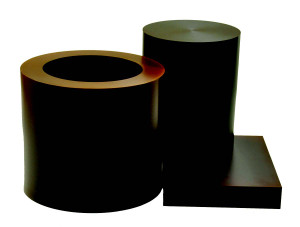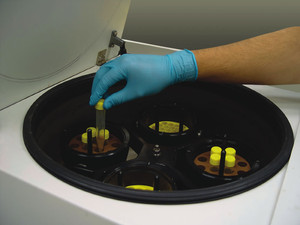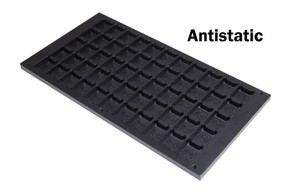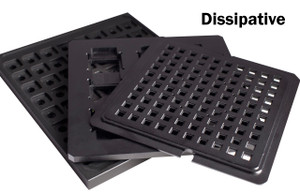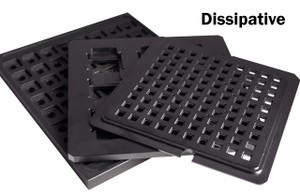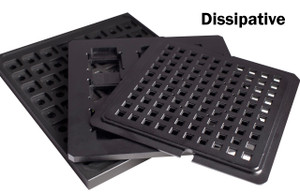Dry Environment and ESd
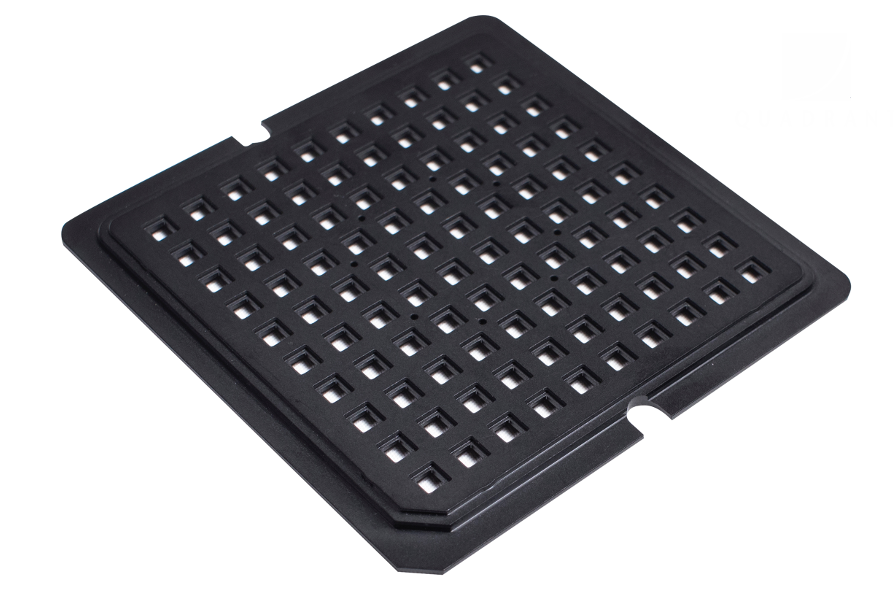 One segment that uses plastics for specific functional purposes is Dry Environment. This includes lithography, metrology, lapping, dicing, and wafer mobility robotics, to name a few. We make the distinction of Dry Environment to refer to any plastic product that is selected in a wafer process tool that functions in an environment that is free of chemistries or plasmas, wet solutions, or outside of a vacuum chamber. In essence, these are the “everything else” regarding wafer processing tools. In these applications, plastics are chosen generally to perform a specific function since metals and ceramics are not subject to chemistry. Such areas of distinction are:
One segment that uses plastics for specific functional purposes is Dry Environment. This includes lithography, metrology, lapping, dicing, and wafer mobility robotics, to name a few. We make the distinction of Dry Environment to refer to any plastic product that is selected in a wafer process tool that functions in an environment that is free of chemistries or plasmas, wet solutions, or outside of a vacuum chamber. In essence, these are the “everything else” regarding wafer processing tools. In these applications, plastics are chosen generally to perform a specific function since metals and ceramics are not subject to chemistry. Such areas of distinction are:
- Particulation – particulation is the phenomenon whereby very small particles are generated when rubbing two materials together. These very small particles are a source of potential contamination. Care needs to be taken in the selection of these materials.
- Thermal – Often, materials need to withstand elevated heat environments. In this case, one needs to understand the operating temperature of the plastic and match this to the application needs. Often, plastics are chosen as insulators due to ductility.
- Wear Resistance – When two mobile parts rub in opposing directions, you have wear on the mating surface. Plastics are often chosen based on their ability to withstand wear. Controlled wear is actually used for some applications to control the process.
- Flatness & Dimensional Stability – many applications require extreme dimensional tolerance. Here, materials are also chosen for the capability to hold extreme dimensional tolerance.
- Outgassing – in very stable environments such as Lithography, any change in the environment can affect the accuracy of the outcome. For this reason, outgassing data is used to differentiate potential selection
- Electrostatic Control – aka: ESD, these materials are selected to manage the potential static build up. Materials are chosen based on what the engineer or designer wants to do with the potential spark. Options range from conductive to dissipative through antistatic control. After the decision is made on how to best handle the static build up, the resin is chosen based on other properties, including mechanical and thermal.
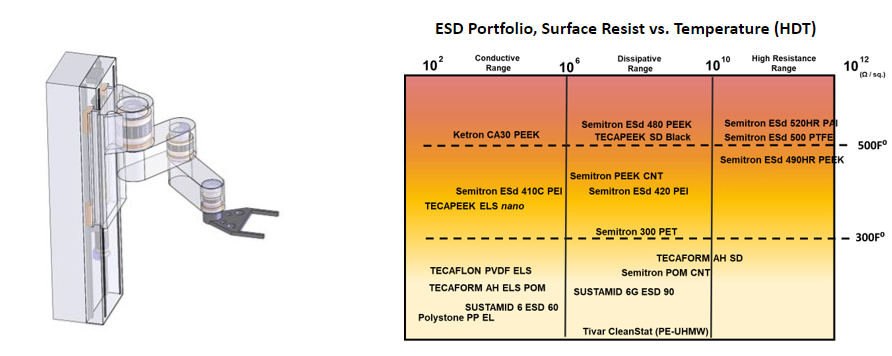
Typical Application Types
- Thermal Insulators
- Wafer Handling
- Gears
- Wafer Chucks
- End Effectors
Typical Product Families
- PEEK
- PBI Celazole
- PAI Torlon
- Polyimide
- Ultem PEI
Electrostatically Controlling Materials
ESD materials make up its own extensive portfolio of solutions. Materials are first chosen based on how the static charge will be managed. Secondly, materials are chosen based on the properties needed for the application. This can range from thermal properties and chemical resistance to mechanical properties. ESD materials can also vary based on the additives used to control the bleed off of the static charge. A deep understanding of the dynamics of the materials that make up the portfolio of available solutions is required to optimize the material for your specific application

